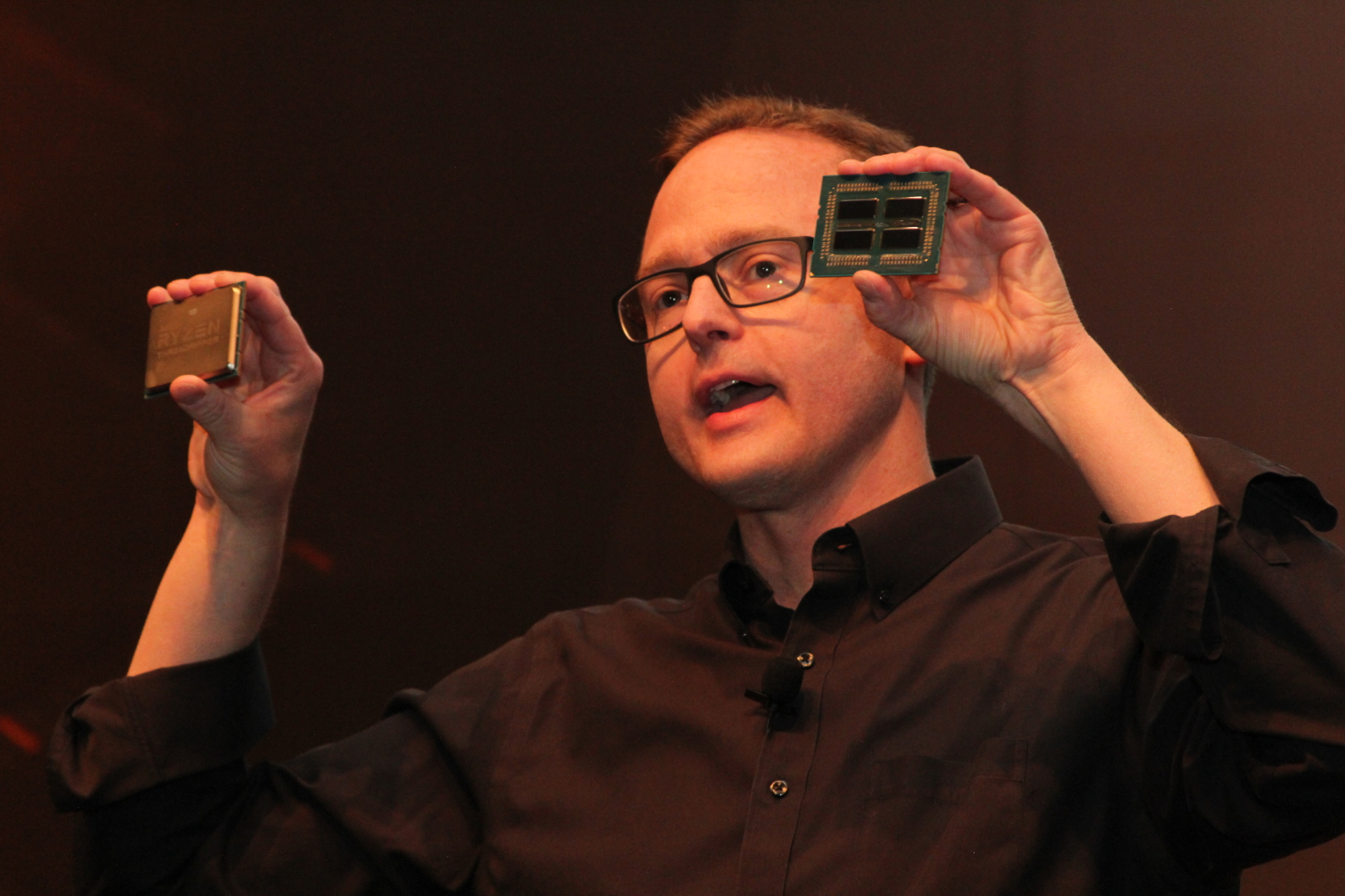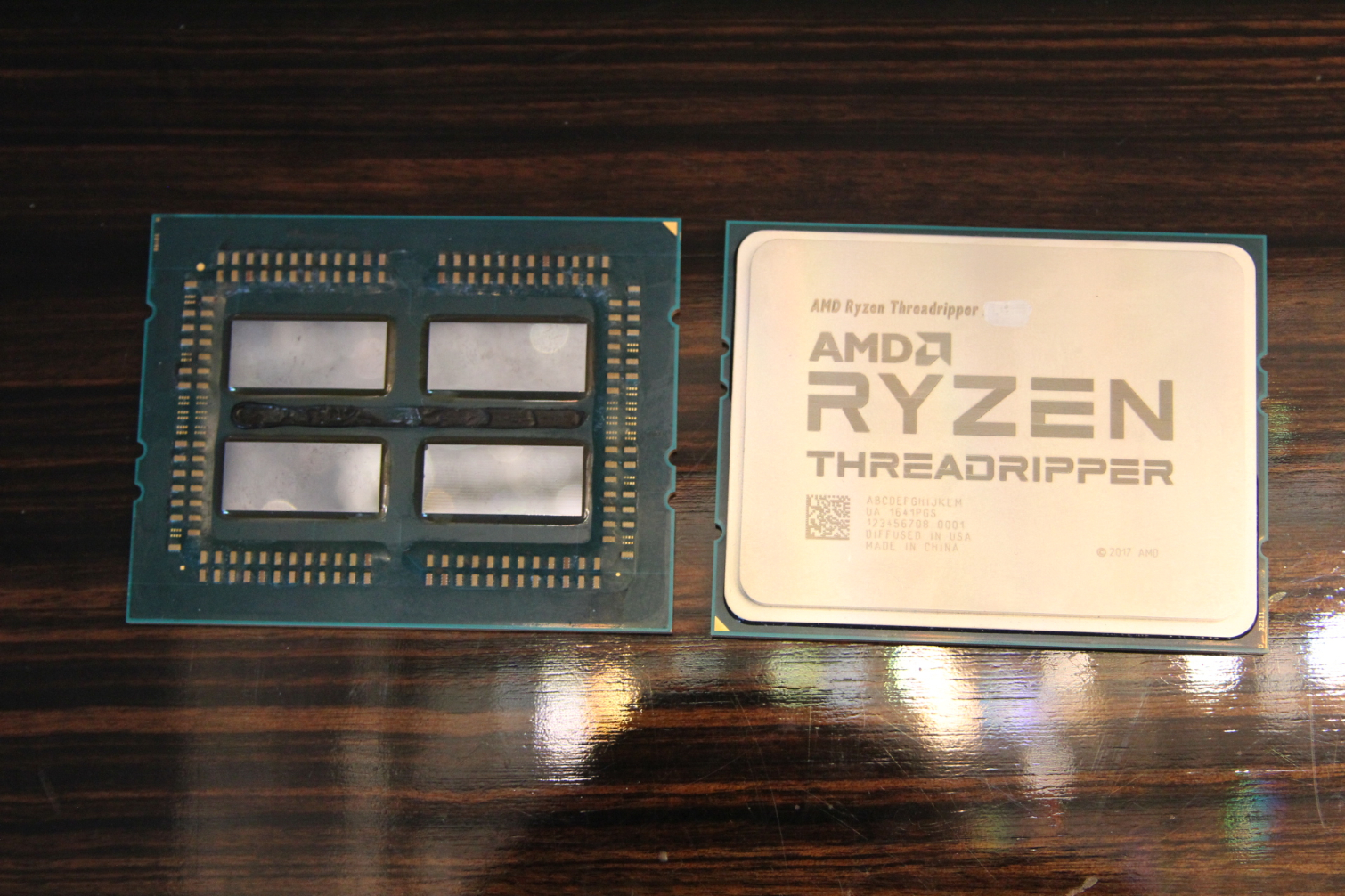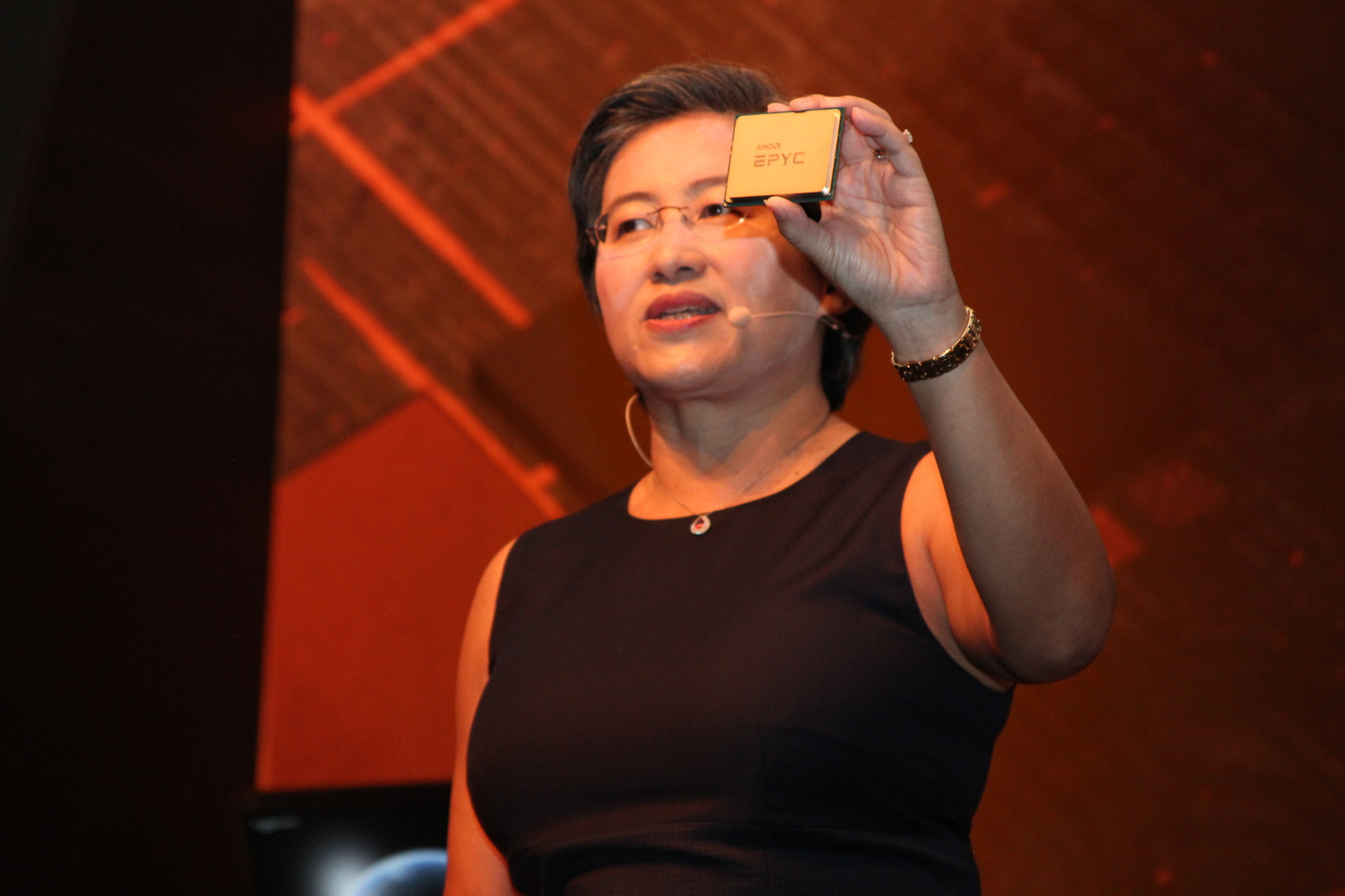AMD Announces 32-core Threadripper 2, Shows 7nm EPYC CPU
AMD announced that it is launching its second-gen Threadripper processors in Q3 2018. These new models will stretch up to 32 cores and 64 threads and feature the new 12nm Zen+ architecture. The processors also feature many of the same enhancements we've seen on the second-gen Ryzen processors, such as increased single-core frequencies, higher multi-core boost frequencies, and reduced memory latency.
AMD's Threadripper processors have a distributed MCM (Multi-Chip Module) design that connects multiple eight-core packages via the Infinity Fabric. Instead of the two active Zeppelin die we found with the original first-gen Threadripper models, the new lineup wields four total active die. AMD will also have 24-core second-gen Threadripper models, but hasn't specified how many models the new family will have or their core counts. AMD also hasn't provided pricing specifics yet.
AMD has a new wave of X399 refresh motherboards coming to market now, but the new Threadripper processors are also backwards compatible with existing X399 motherboards.We've been told that many existing X399 motherboards may struggle with the increased power consumption of the newer models, so VRM-imposed throttling could become an issue..
We've already seen several new X399 motherboards here at the show, like the new MSI X399 MEG Creation that we spotted earlier this week. This motherboard comes with a beefy power delivery subsystem to accommodate the higher TDP rating of the second-gen Threadripper processors, which we've heard can stretch up to 250W. Head over to our article for deeper coverage.
Intel isn't going to cede the core count leadership position to AMD without a fight, though. The company demoed a new 28-core desktop CPU yesterday during its keynote. Intel demoed the processor at 5.0 GHz, but after further inspection, we found that the company used a chilled water cooler to accomplish the feat. In either case, Intel's new lineup of HEDT processor should find the two companies trading blows yet again this year. If history is any indication, AMD should have the pricing advantage.
Lisa Su also displayed a 7nm EPYC processor, which is coming to market this year, and the world's first 7nm Radeon Instinct Vega GPU with 32GB of HBM2, but those leading models are destined for the data center. AMD says that 7nm gaming GPUs will follow early next year.
We have meetings scheduled with AMD executives in the coming minutes, so we will update this article as we learn more.
Get Tom's Hardware's best news and in-depth reviews, straight to your inbox.

Paul Alcorn is the Editor-in-Chief for Tom's Hardware US. He also writes news and reviews on CPUs, storage, and enterprise hardware.
-
yorich "This motherboard comes with a beefy power delivery subsystem to accommodate the higher YDP rating of the Threadripper 2 processors" YDP? Who proofs these articles? a 6 year old?Reply -
bit_user One thing to note: 32-core Threadripper will still have only 4 memory channels. They'll connect to 2 of the 4 zepplin dies, meaning the other two dies will have to traverse the Infinity Fabric to reach memory. It will be interesting to see the performance impact this has on different workloads.Reply -
bit_user Reply
Please stop calling it "desktop". There's really nothing desktop about it - not the socket, memory, TDP, or motherboard. It's not even a Xeon W (Workstation) chip.21031872 said:The company demoed a new 28-core desktop CPU yesterday during its keynote.
It's a server chip that they simply overclocked and might choose to market to desktop users with a high tolerance for large electricity bills. The price of these systems will likely be "server-grade", as well. -
keitarofujiwara So Intel's announcement of the 28 core was just them trying to steal AMD's thunder? Petty.Reply -
Lucky_SLS 4.3ghz all core oc prime 95 run 750w power draw. Mobo melter incoming, the next FX-9590!Reply -
Dosflores A 32-core processor that doesn't require a chilled water cooler (unlike Intel's) ?Reply
A 7nm EPYC processor coming to market this year?
7nm gaming GPUs early next year?
This is huge, but I guess Intel and Nvidia will make sure that the press reports it as totally insignificant. -
InvalidError Reply
The real problem with the FX series was the lack of performance to justify the increased TDP. Shouldn't be a problem with ThreadRipper 2... aside from its TDP likely exceeding many TR4 motherboards' VRM comfort zone so people will need to upgrade their motherboards despite TR2 being otherwise technically compatible.21032210 said:4.3ghz all core oc prime 95 run 750w power draw. Mobo melter incoming, the next FX-9590!




